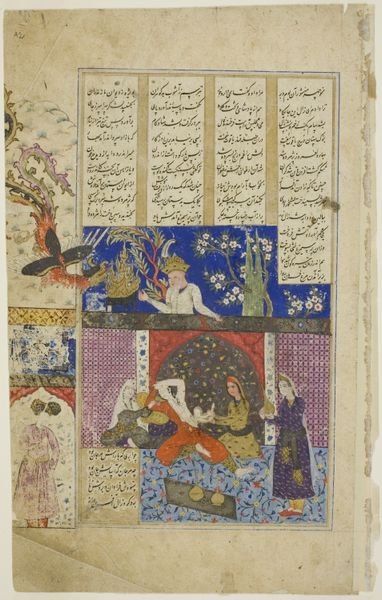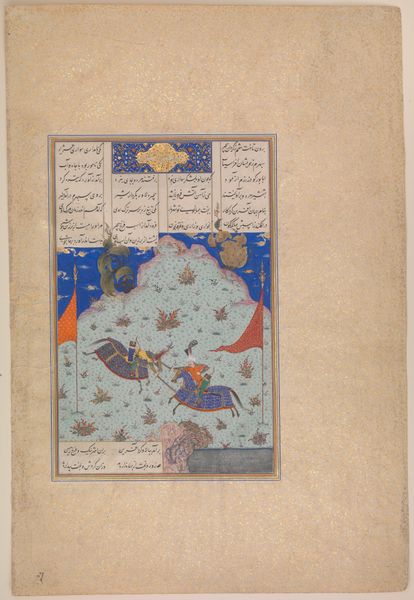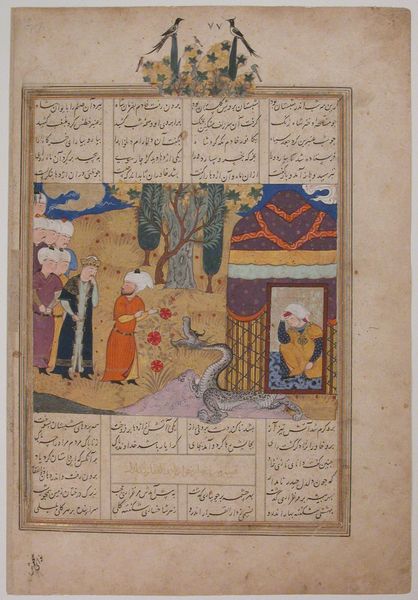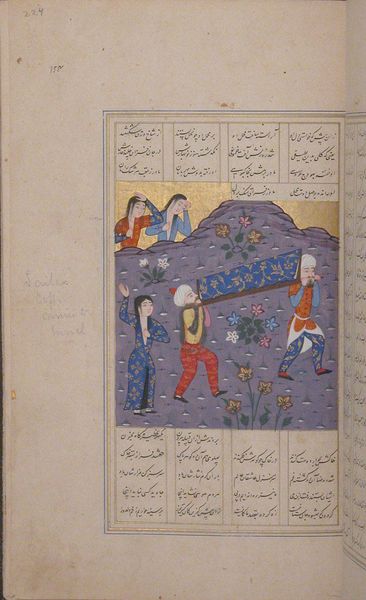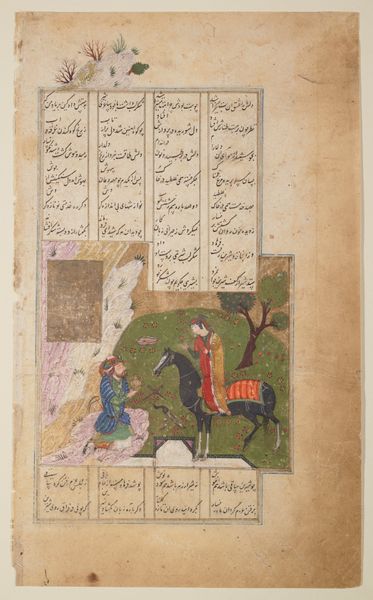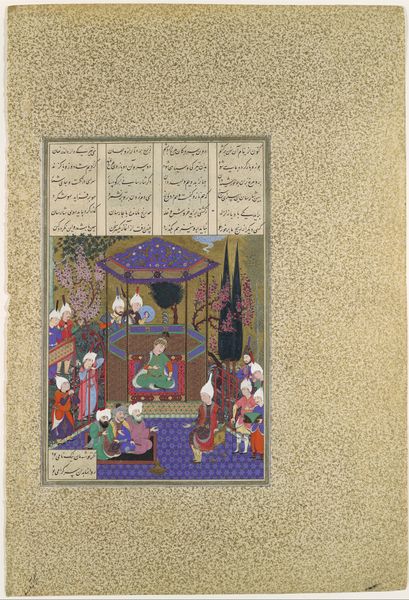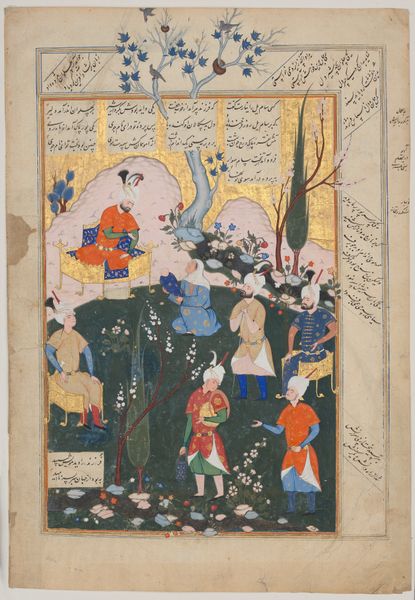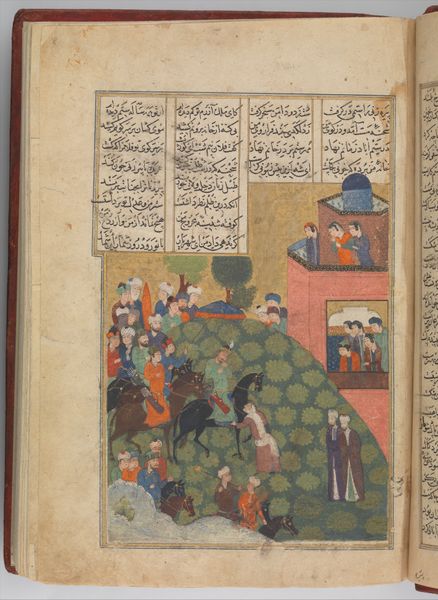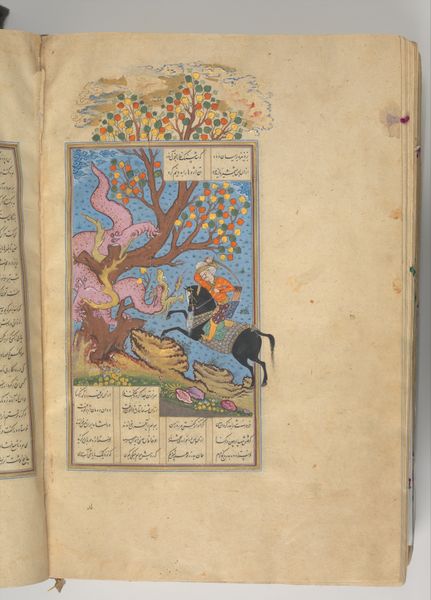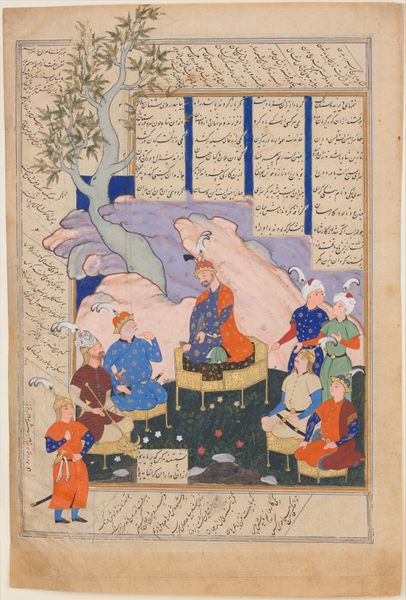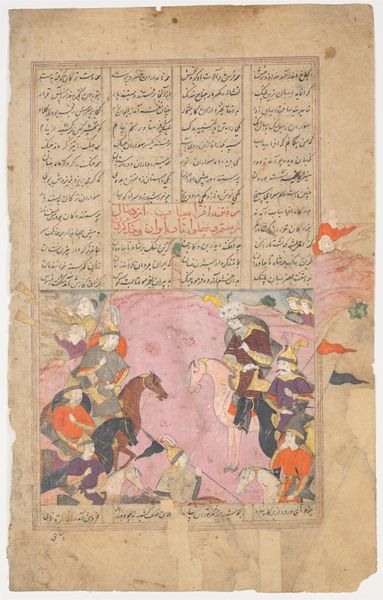
painting, paper, watercolor, ink
#
portrait
#
narrative-art
#
painting
#
figuration
#
paper
#
watercolor
#
ink
#
coloured pencil
#
islamic-art
#
history-painting
#
miniature
Dimensions: 9 15/16 x 2 7/16 in. (25.2 x 6.2 cm)
Copyright: Public Domain
Curator: Before us we have "Khusrau Subduing a Lion," a painting rendered in ink and watercolor on paper, created around the late 15th century. It belongs to the collection of the Minneapolis Institute of Art. Editor: The first impression is intense drama rendered in a small, almost jewel-like space. The vibrant colors clash, and the entire composition is a tightly packed struggle. Curator: Indeed. Notice how the production of the miniature allowed for a meticulous depiction of the scene. Look at the precision with which the artist layered the pigments and used the paper’s texture, how those very materials would have dictated a specialized labor in workshops. Editor: The lion is a prevalent symbol here, of course. Royal power and valor is communicated via the symbolic animal. Khusrau taming this lion conveys the leader's strength over forces of nature. But also that the divine authority is blessing Khusrau. Curator: The choice of paper as a support and the portability of this miniature format points toward specific consumption and its dissemination to courts or among privileged individuals for didactic or devotional purposes. It speaks to patterns of consumption during that era. Editor: What's compelling, though, is the arrangement of figures. See how Khusrau confronts the lion in the middle, becoming a symbol for control; this man isn't merely defending himself. There is the implied message about protection to its surrounding followers or subjects, too. The narrative is almost diagrammatic in clarity. Curator: I find the inscription blocks interesting in considering the art. This insertion within manuscript traditions means it would have been bound to specific ideological projects through its very fabrication as material artifact that shaped interpretation. Editor: True, though what stands out to me is the underlying drama of leadership that still connects to our psyche today. It's a symbolic scene we seem eternally drawn towards. The icon of 'leader-vs-beast' remains powerful, even in contemporary visual vocabularies. Curator: So ultimately it isn't only the figures or their postures and colors that determine meaning but also that of material and production's intersection shaping our view. Editor: Exactly! The visual persists precisely because of how deeply embedded it is across histories in human experience. Both informs this miniature's complex power.
Comments
minneapolisinstituteofart about 2 years ago
⋮
Of all Persian poetry, the twelfth-century Khamsa, or Quintet, was second only to the Shah Nama in popularity. Comprised of five romances, the story of Khusrau and Shirin is drawn from the history of the ancient Sassanian kings. The poem recounts the deep love of the monarch Khusrau Paviz (590-628) for a beautiful Armenian princess, Shirin. The Persian poet, Nizami, author of the Khamsa, was keenly interested in exploring the vagaries of human character, and this page illustrates an episode in which Khusrau rescues Shirin by killing a lion with his bare fists in front of her tent.
Join the conversation
Join millions of artists and users on Artera today and experience the ultimate creative platform.
